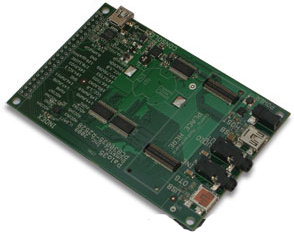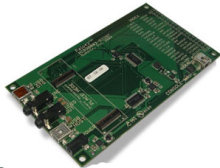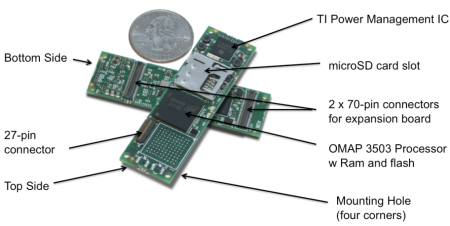Cortex-A8 COM gains touchscreen board
Oct 29, 2009 — by Eric Brown — from the LinuxDevices Archive — 9 viewsGumstix is shipping a new expansion board for its Linux-supported, ARM Cortex-A8-based Overo computer-on-module (COM) series, aimed at small form-factor wireless devices. The Palo35 is designed to incorporate one of Gumstix's four Texas Instruments' OMAP35xx-based Overo modules, and supports a 3.5-inch LCD touchscreen from LG, says the company.
The Palo35 board targets the development of handheld PDAs, portable location tracking devices, transportation applications, or e-books, says Gumstix, which has been making Linux-ready modules and tiny single board computers (SBCs) since 2004. The Palo35 is designed to complement the company's earlier Palo43, a 4.3-inch LCD board that offers similar USB connectivity and other I/O (see farther below).

Gumstix Palo35
In April, the Overo family was expanded with similarly sized modules including the WiFi-enabled Overo Air, which incorporates the basic OMAP3503 version of the OMAP35xx SoCs. Gumstix also added the Overo Water (OpenGL graphics) and Overo Fire (OpenGL and WiFi) modules, which offer the multimedia-enhanced OMAP3530. All four Overo modules are equipped with 256MB of low-power DDR RAM and 256MB of NAND flash, says Gumstix.
 |
The Overo boards, including the original Earth model, have been offered with a choice of three expansion boards: the basic Summit board, the Ethernet-enabled Tobi board, and the model for the Palo35, the LCD touchscreen-ready Palo43 (pictured at right).
Like the other Overo boards, the Palo35 supplies USB connectivity, including mini-AB (with OTG), mini-B (with USB Host), and a USB console. Other connectivity, provided via a 40-pin unpopulated standard header, includes dual two-wire serial ports, a single 1-wire port, 6 PWM lines, an I2C port, an SPI bus, and six A/D input lines and processor control signals.
Multiple signals are available on 0.100-inch through-holes at 1.8V logic, says the company. The boards each have 4V to 5.5V power input, and offer dual 70-pin AVX connectors and four mounting holes to match up with the Overo COM modules.
The 3.9 x 3.5-inch (98.5 x 64mm) Palo35 supports, via a 60-pin FPC connector, a separately sold 3.5-inch LG LCD, which offers a resistive touchscreen overlay @ 16 bpp. The Palo35 offers several features that don't appear to be offered on the Palo43, including audio in and audio out, cell-battery backup, and an accelerometer.

Overo Earth module
(Click to enlarge)
Stated W. Gordon Kruberg, President and CEO of Gumstix, "Our OMAP-based Overo product line with Palo35 now gives design engineers a wider variety of LCD panel and computer-on-module choices for building either standalone or wireless network devices."
Availability
The Palo35 expansion board is available now for $59 without the separately sold Overo module or LCD touchscreen. More information may be found here.
This article was originally published on LinuxDevices.com and has been donated to the open source community by QuinStreet Inc. Please visit LinuxToday.com for up-to-date news and articles about Linux and open source.